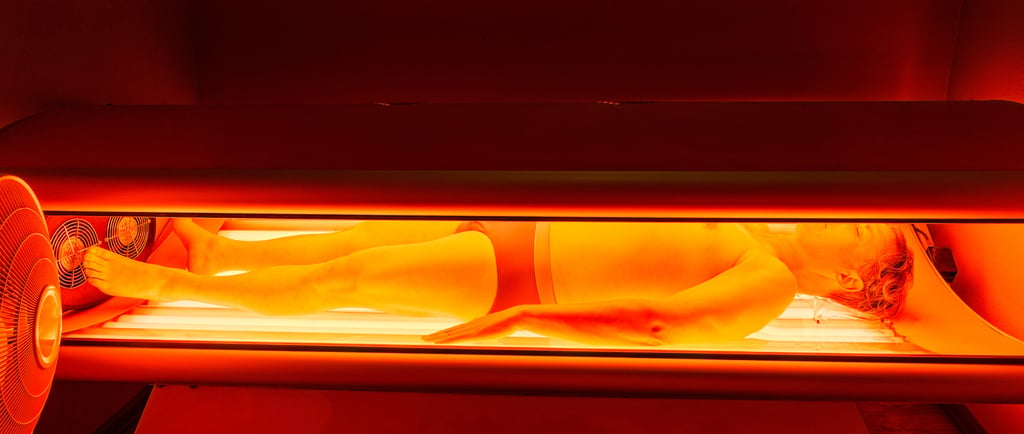Red Light Therapy for Muscle Recovery, Joint Pain & Inflammation Relief
Sore muscles and achy joints? RLT might be the recovery tool that you never knew you needed


If you’ve ever said, “I just slept wrong” and then couldn’t turn your head for three days - this one’s for you (and me) my friend.
Red light therapy (RLT) isn’t just for the beauty and skincare obsessed. It’s become a go-to tool in sports science, physical therapy, and pain management circles for its ability to reduce inflammation, speed up healing, and support joint health — all without drugs, needles, or downtime.
Let’s break down exactly how it works, and why you might want to shine some light on more than just your face.
The Science (in non-sciency English)
Red and near-infrared light (typically in the 630–850 nm wavelength range) penetrates deep into soft tissue. Once it reaches your muscle or joint cells, it boosts something called mitochondrial activity — which is basically your cell’s way of producing energy (ATP).
More ATP = faster cell repair + reduced oxidative stress (inflammation) = faster recovery and less pain.
1. Muscle Recovery & Performance
Red light therapy has become a quiet secret among professional athletes, coaches and trainers, and people who just really overdo it at Pilates or weight training regularly (🙋🏻♀️).
What it does:
Reduces post-workout muscle soreness and stiffness
Speeds up muscle fiber repair
Improves blood flow to tired muscles
Increases strength, endurance, and muscle gains over time
Studies say:
A 2016 meta-analysis of 13 clinical trials found that pre- and post-workout RLT significantly reduced muscle damage and improved performance outcomes like time-to-fatigue and power output.
Source: Leal-Junior et al., 2016Soccer players using red light therapy after matches had faster recovery of strength and less muscle damage compared to teammates who didn’t.
Source: de Marchi et al., 2017
💡 Pro tip: Use RLT within 4 hours before or after exercise. Aim for 10–20 minutes per muscle group, 3–5x per week.
2. Joint Pain & Inflammation (Yes, Even Arthritis)
If red light therapy had a second home outside of skincare, it’d be in orthopedic clinics. Its anti-inflammatory powers work wonders for creaky joints, injured tendons, or everyday movement pain.
What it does:
Decreases inflammatory markers like IL-6 and prostaglandins
Stimulates collagen and connective tissue repair
Improves range of motion and mobility
Increases circulation to nourish cartilage and joint fluid
Research highlights:
A clinical trial on patients with knee osteoarthritis showed that 12 sessions of red light therapy significantly reduced pain and improved mobility — even after treatment stopped.
Source: Alayat et al., 2014A 2020 meta-analysis found that RLT offered moderate to large improvements in joint pain, stiffness, and function across various arthritis types.
Source: Gordon et al., 2020
Real Talk: Who This Helps
RLT is ideal for:
Athletes & gym-goers
People with osteoarthritis or chronic joint pain
Those recovering from sprains, strains, or surgeries
Anyone with chronic inflammation or tension
And the best part? You can do it at home. Many red light panels and wraps are designed specifically for larger body areas, like backs, legs, or shoulders. (We’ll go over top devices in Part 6.)
Coming Up Next…
Next up: your brain, sleep, and mood get the red light treatment.
Stay tuned for Part 5: Red Light for Brain Health, Mood, Sleep & Unexpected Wellness Perks.


Beautifology
Let's glow together
Get in touch for any comments, questions or product recommendations
© 2024. All rights reserved.
